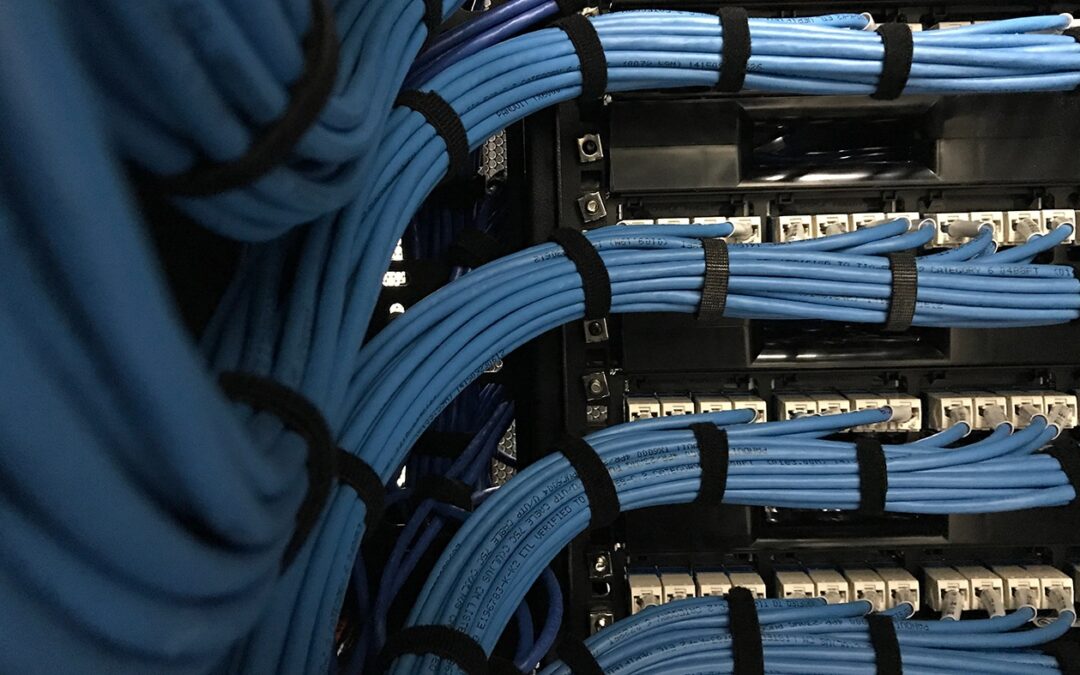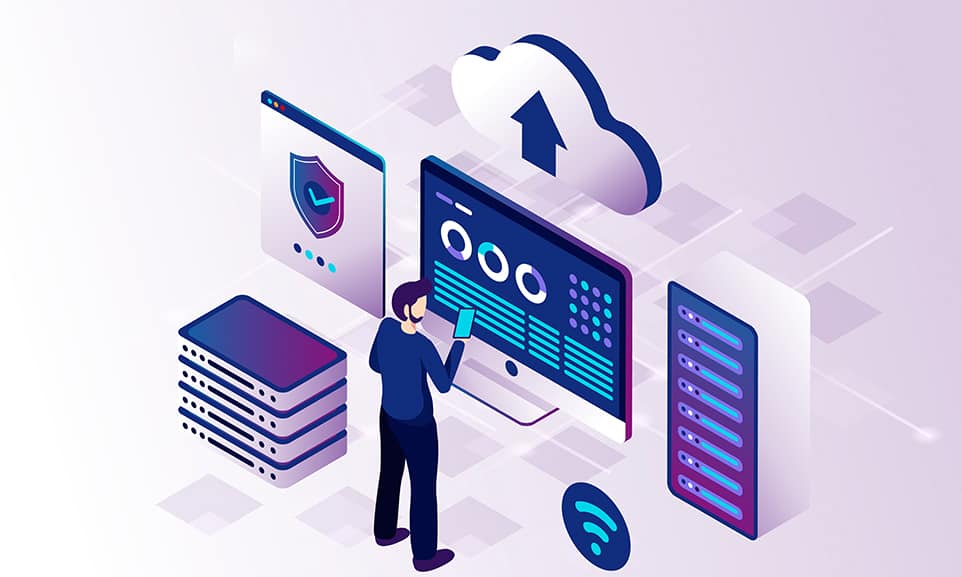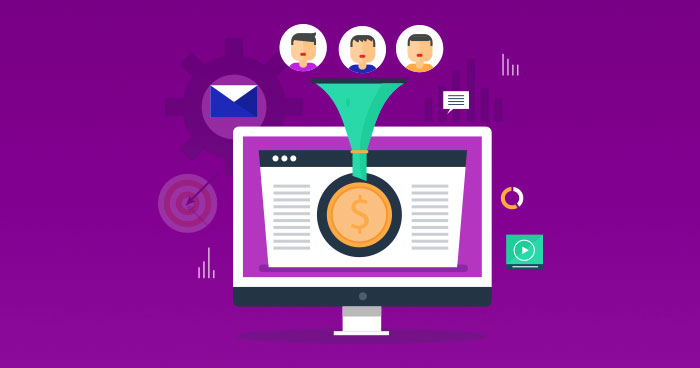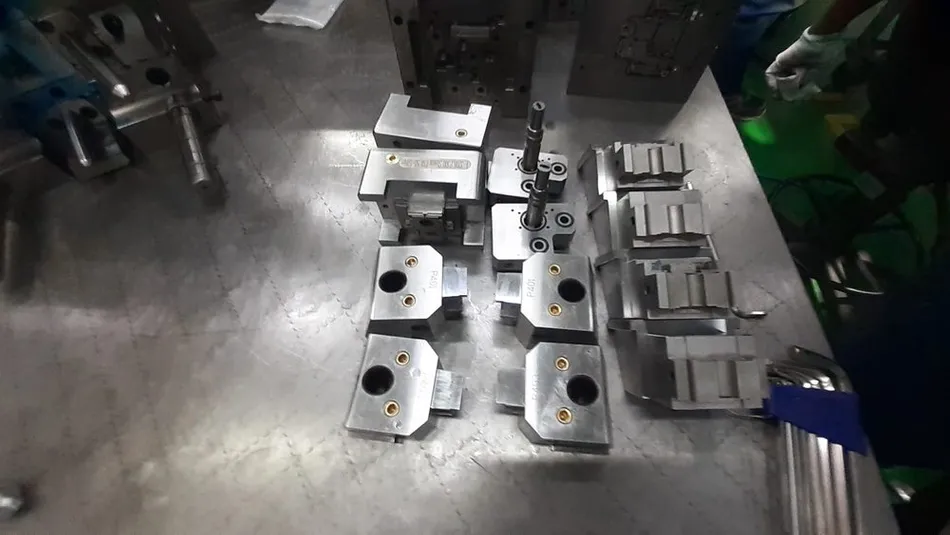
by Ja Darrion | Jan 4, 2025 | Technology
Cisco Systems is a global leader in networking technology, and their switches are famous for their reliability, produce a consequences, and robust feature sets.
Types of Cisco Switches:
Unmanaged Switches: These are the most basic type, offering plug-and-do its stuff connectivity considering limited configuration options. They are comfortable ample for small networks in the midst of easy requirements.
Smart Switches: These designate more campaigner features than unmanaged switches, such as VLAN contract, Quality of Service (QoS), and basic security features.
Managed Switches: These meet the expense of the highest level of run and adaptableness, allowing for in-extremity configuration, militant security features, and network monitoring.
Please check price details in cisco switch price in Bangladesh below options.
Cisco CBS350 Price in Bangladesh.
- CBS350-24T-4G-EU: ৳ 29,000 – ৳ 31,000
Cisco CBS1000 Price in Bangladesh.
- CBS1000-24T-4X-L: ৳ 115,000 – ৳ 125,000
- CBS1000-24FP-4G-L: ৳ 122,500 – ৳ 132,500
- CBS1000-48P-4G-L: ৳ 165,000 – ৳ 172,000
- CBS1000-48T-4X-L: ৳ 195,000 – ৳ 208,000
Cisco CBS9200L Price in Bangladesh.
Prices for this series will be significantly progressive, typically ranging from 500,000 to 2,000,000+ depending upon the specific model and configuration.
Conclusion:
Cisco switches are a competently-behaved and robust option for businesses of all sizes. By selecting the right Cisco switch for your specific needs, you can construct a high-play in, safe, and scalable network foundation that supports your issue objectives .

by Ja Darrion | Dec 23, 2024 | Technology
When it comes to building a reliable and high-performance network, UTP Cat6 cables are often the ideal choice. These cables have become the go-to solution for businesses, home offices, and gaming enthusiasts because of their ability to support high-speed data transfer and reliable connections. At BestComputerHub.com, we understand the importance of choosing the right network cable to ensure your setup is fast, secure, and future-proof. In this article, we’ll dive deep into what UTP Cat6 cables are, their benefits, their technical details, and why they are an essential part of any network.
What is UTP Cat6 Cable?
UTP Cat6 (Unshielded Twisted Pair Category 6) is a type of network cable that is designed to provide high-speed data transmission over short to medium distances. It is part of the Category 6 standard for Ethernet networking and is commonly used in local area networks (LANs), data centers, home networking, and high-speed internet installations.
The Cat6 cable is constructed with four pairs of copper wires, twisted together to reduce electromagnetic interference (EMI) and crosstalk between the pairs. The twisting helps maintain the integrity of the signal by minimizing external noise that could affect the performance of the cable.
Unlike older cables, such as Cat5e, the Cat6 cables feature improved bandwidth and can handle faster speeds and higher frequencies, making them a popular choice for businesses and home users looking for faster and more reliable connections.
- High-Speed Data Transmission
One of the main advantages of UTP Cat6 cables is their ability to support high-speed data transmission. Cat6 cables can handle speeds of up to 10 Gbps over short distances (up to 55 meters) and 1 Gbps over longer distances (up to 100 meters). This makes them perfect for applications that require fast internet speeds, such as streaming, gaming, and large file transfers.
- Improved Bandwidth
Cat6 cables offer a greater bandwidth (250 MHz) than their predecessors, such as Cat5e cables (100 MHz). This means Cat6 cables can transmit more data at once, which reduces network congestion and ensures better overall performance, especially in high-traffic environments.
- Enhanced Performance for Future-Proof Networks
As technology continues to evolve, the demand for faster internet speeds and higher bandwidth increases. UTP Cat6 cables are a great investment because they support speeds up to 10 Gbps, which is suitable for current needs and future networking demands, including emerging technologies such as 4K/8K streaming, cloud computing, and high-performance gaming.
- Reduced Crosstalk and Interference
The twisted pair design of Cat6 cables helps reduce crosstalk (interference between wires), resulting in a cleaner and more reliable signal. While UTP (Unshielded Twisted Pair) cables don’t have the shielding found in STP cables, they are still effective at maintaining signal integrity over short to medium distances, making them an affordable option for most home and office environments.
- Cost-Effective Networking Solution
UTP Cat6 cables are widely available and relatively affordable compared to other high-performance cables, such as Cat6a or fiber optic cables. They provide an excellent balance of performance and cost, making them ideal for both home users and businesses looking to build a high-speed network without breaking the bank.
Technical Specifications of UTP Cat6 Cable
When choosing a UTP Cat6 cable, understanding its technical specifications is key to selecting the right cable for your needs. Below are some of the critical parameters to consider:
- Data Rate and Bandwidth
- Maximum Data Rate: 10 Gbps at a maximum distance of 55 meters (for Cat6), and 1 Gbps for distances up to 100 meters.
- Bandwidth: 250 MHz, which allows for faster data transmission compared to Cat5e (100 MHz).
- Jacket and Insulation
- Jacket Material: Typically made of PVC (Polyvinyl Chloride) for general indoor use. However, some Cat6 cables may feature LSZH (Low Smoke Zero Halogen) jackets, which are safer in the event of a fire.
- Conductor Material: The wires inside are usually made of pure copper or copper-clad aluminum (CCA), with pure copper being the preferred choice for better conductivity and performance.
- Cable Length and Performance
- Standard Maximum Length: The standard maximum cable length for Cat6 is 100 meters for 1 Gbps speeds, and 55 meters for 10 Gbps speeds.
- Cable Construction: Four twisted pairs of copper wire are enclosed in a PVC or LSZH jacket, which provides stability and helps maintain signal integrity. For installations that require shielding, there are Cat6a and STP Cat6 variants available.
- PoE (Power over Ethernet) Capability
UTP Cat6 cables are capable of supporting PoE standards, delivering power and data simultaneously over the same cable. This feature is beneficial for powering devices like IP cameras, access points, and VoIP phones.
- Ethernet Standard Compatibility
Cat6 cables are backward-compatible with older Ethernet standards, such as 100BASE-TX (Fast Ethernet) and 1000BASE-T (Gigabit Ethernet). They also support 10GBASE-T (10 Gigabit Ethernet), making them a versatile choice for any network setup.
Common Uses of UTP Cat6 Cable
UTP Cat6 cables are incredibly versatile and can be used in a variety of networking setups. Some of the most common applications include:
- Home Networking
For home users, Cat6 cables are perfect for connecting devices like routers, modems, PCs, gaming consoles, smart TVs, and NAS devices. Whether you’re streaming 4K content, gaming online, or working from home, Cat6 cables ensure smooth and uninterrupted connections.
- Business Networks
UTP Cat6 cables are frequently used in office environments to connect computers, printers, servers, and other networked devices. They provide the bandwidth needed for VoIP calls, video conferencing, and data-heavy applications. Businesses that rely on a fast and reliable network often use Cat6 cables to ensure optimal performance.
- Data Centers
In data centers, where high-speed data transmission is critical, Cat6 cables are commonly used to connect servers, switches, and storage devices. They are capable of handling the high bandwidth requirements of modern data centers, providing fast and reliable connectivity between devices.
- Gaming and Streaming
For gaming enthusiasts, a fast and stable connection is essential for a seamless experience. Cat6 cables are ideal for online gaming, streaming 4K content, or participating in live video streams. The high-speed capabilities of Cat6 cables ensure low latency and lag-free performance.
- Smart Home Devices
As the Internet of Things (IoT) continues to grow, many smart home devices require high-speed wired connections. Whether it’s for security cameras, smart hubs, or home automation systems, Cat6 cables provide reliable and fast network connections.
Best UTP Cat6 Cable Brands and Models
Several reliable brands manufacture high-quality UTP Cat6 cables, offering different features suited for various use cases. Here are some of the top brands and models available at BestComputerHub.com:
- Rosenberger Cat6 UTP Ethernet Cable
- Length: Available in various lengths (up to 305 meters)
- Features: High-performance cable with a robust outer jacket, reliable signal integrity
- Perfect for: Data centers, large office networks, and industrial applications
- Commscope UTP Cat6 Cable
- Length: Multiple lengths available (50ft, 100ft, 500ft, 1000ft)
- Features: Premium copper construction, tight twist for better signal quality, high-performance bandwidth
- Perfect for: High-speed networking in business and home environments
- Panduit UTP Cat6 Ethernet Cable
- Length: Available in 10ft, 25ft, 50ft, and 100ft
- Features: Flexible design, PoE compatibility, premium shielding for superior protection
- Perfect for: Office buildings, residential setups, and VoIP installations
- R&M (Reichle & De-Massari) Cat6 Cable
- Length: Available in 100ft and 1000ft options
- Features: High-quality pure copper wiring, crosstalk prevention, stable performance
- Perfect for: Commercial installations, educational institutions, and high-demand network environments
- Mediabridge UTP Cat6 Ethernet Cable
- Length: Available in various lengths (3ft, 10ft, 25ft, 50ft, 100ft)
- Features: Gold-plated connectors, ultra-durable construction, reliable high-speed performance
- Perfect for: Home networking, gaming, and office environments
- Ultra Clarity Cables Cat6 Ethernet Cable
- Length: Available from 3 feet to 250 feet
- Features: Flexible, high-quality PVC jacket, strain-relief boots
- Perfect for: Long-distance networking, data centers, and home offices
Conclusion: Why Choose UTP Cat6 Cable at BestComputerHub.com?
At BestComputerHub.com, we offer a wide variety of UTP Cat6 cables from top brands like Rosenberger, Commscope, Panduit, R&M, and many others, ensuring you get the best quality and value for your networking needs. Whether you’re upgrading your home network, setting up a business office, or building a high-performance gaming setup, Cat6 cables are an essential component for achieving fast, reliable, and future-proof connections.
Browse our selection today and enjoy fast shipping, competitive prices, and expert advice.

by Rolando Corley | Dec 1, 2024 | Business, Technology
In recent years, the demand for renewable energy sources has surged, driven by the need for sustainable solutions and the promise of long-term savings. Among these solutions, solar and battery systems have emerged as a powerful combination, providing both energy independence and financial benefits. This article will explore the intricacies of solar and battery systems, focusing on their benefits, costs, and the future of energy in Australia.
The Rise of Solar Energy in Australia
Australia is blessed with abundant sunlight, making it an ideal location for solar energy generation. Over the past decade, the adoption of solar technology has grown exponentially, with residential and commercial properties alike leveraging this renewable resource. Solar energy not only reduces reliance on fossil fuels but also lowers electricity bills, making it an attractive option for many Australians.
One of the critical factors driving this growth is the decreasing solar and battery price. As technology advances and production scales up, the costs associated with solar panels and battery storage systems have significantly declined. This trend has made solar energy more accessible than ever, particularly for businesses looking to enhance their sustainability efforts while maximizing their return on investment.
The Importance of Battery Systems
While solar panels are effective at generating electricity during daylight hours, they do not provide energy at night or during inclement weather. This is where battery systems come into play. By storing excess energy generated during the day, battery systems enable users to access solar power whenever they need it.
The integration of solar and battery systems offers several advantages:
Energy Independence: By generating and storing your own electricity, you become less dependent on the grid. This is particularly beneficial during peak demand times when electricity prices tend to spike.
Cost Savings: Utilizing stored energy during peak hours can significantly reduce electricity costs. With a well-designed solar and battery system, users can optimize their energy use and take advantage of lower rates.
Sustainability: Using renewable energy sources contributes to a reduction in carbon emissions, aligning with global efforts to combat climate change.
Reliability: In the event of a power outage, a battery system can provide backup power, ensuring that essential services remain operational.
Choosing the Right Solar and Battery Systems
When considering a solar and battery system, it’s crucial to evaluate various factors to ensure you select the best option for your needs. Here are some key considerations:
- Energy Needs Assessment
Understanding your energy consumption patterns is vital. Analyze your electricity bills to determine your average monthly usage. This information will help you decide the size of the solar panel system and the capacity of the battery storage required.
- Quality of Products
Not all solar panels and batteries are created equal. It’s essential to invest in high-quality products that come with robust warranties. Research reputable manufacturers and look for certifications that indicate reliability and performance.
- Installation and Maintenance
The installation of solar and battery systems should be carried out by qualified professionals. Proper installation ensures optimal performance and longevity. Additionally, consider the maintenance requirements of the systems to keep them operating efficiently.
- Financial Incentives
In Australia, various government incentives and rebates are available for solar and battery installations. These financial aids can significantly offset the initial costs, making it more feasible for both residential and commercial clients to invest in renewable energy.
The Future of Solar and Battery Systems
As technology continues to evolve, the future of solar and battery systems looks promising. Innovations in energy storage, such as lithium-ion and beyond, are making battery systems more efficient and longer-lasting. Furthermore, the integration of smart technology allows users to monitor and manage their energy consumption in real-time, optimizing their usage patterns for maximum efficiency.
With ongoing research and development, we can expect further reductions in solar and battery prices, making renewable energy solutions more accessible for everyone. This shift not only benefits individual users but also contributes to Australia’s overall energy sustainability goals.
Lumenaus: Leading the Way in Solar and Battery Solutions
At Lumenaus, we pride ourselves on being a market leader in commercial solar and battery systems. With a decade of experience in delivering high-quality projects throughout Melbourne and nationwide, we understand the unique needs of our clients. Our valued customers, which include hospitals, engineering firms, and commercial builders, expect exceptional service and guaranteed returns on their investments.
We are committed to exceeding client expectations, as evidenced by the numerous commendations we have received from our commercial customers. Our approach focuses on providing reliable products, high workmanship standards, and exceptional service.
For residential clients, we offer the Lumenaus Select Product Package Options, designed to deliver high-quality system choices that maximize value for every budget. Our team works closely with homeowners to assess their energy needs and recommend tailored solutions that ensure satisfaction and efficiency.
Conclusion
The transition to renewable energy sources is not just a trend; it is a necessary shift towards a sustainable future. Solar and battery systems play a pivotal role in this transition, offering numerous benefits for both residential and commercial users. As prices continue to decrease and technology advances, the adoption of these systems will only grow.
By choosing high-quality solar and battery systems, you can enjoy energy independence, significant cost savings, and a positive environmental impact. At Lumenaus, we are dedicated to providing exceptional solutions that meet the needs of our clients and contribute to a greener future. Embrace the power of solar energy today and join us in leading the charge towards a sustainable tomorrow.

by Rolando Corley | Nov 21, 2024 | Technology
In the realm of web hosting, where countless websites vie for online visibility, the choice of hosting solution can significantly impact performance, security, and overall user experience. While shared hosting remains a popular option for small-scale websites, dedicated server hosting emerges as a compelling choice for businesses demanding unparalleled control, flexibility, and resources.
Understanding Dedicated Server Hosting
A dedicated server is a physical server exclusively allocated to a single user or organization. Unlike shared hosting, where multiple websites share resources on a single server, a dedicated server provides dedicated hardware, including CPU, RAM, storage, and bandwidth. This exclusive access translates to superior performance, reliability, and security.
Key Benefits of Dedicated Server Hosting
- Unmatched Performance:
- Dedicated Resources: With exclusive access to hardware resources, dedicated servers deliver exceptional performance, even under heavy traffic loads.
- Optimized Configuration: You have the freedom to tailor the server’s configuration to meet your specific needs, fine-tuning settings for optimal performance.
- Enhanced Security:
- Isolated Environment: Dedicated servers operate in an isolated environment, minimizing the risk of security breaches that can occur in shared hosting environments.
- Robust Security Measures: You can implement advanced security measures, such as firewalls, intrusion detection systems, and regular security audits, to safeguard your website and data.
Complete Control:
Root Access: Dedicated server hosting grants you root access, allowing you to manage the server’s operating system and software installations as you see fit.
Customization: You can customize the server’s software stack, including the operating system, web server, database, and programming languages, to match your exact requirements.
Scalability:
Flexible Resource Allocation: As your website’s traffic and resource demands grow, you can easily scale your dedicated server by adding more RAM, storage, or CPU power.
Seamless Upgrades: Upgrading your server’s hardware or software is a straightforward process, ensuring that your website can keep pace with your evolving needs.
Reliability and Uptime:
Dedicated Support: Dedicated server hosting providers offer dedicated support teams to assist you with any technical issues, ensuring minimal downtime.
Redundancy: Many providers offer redundant power supplies, network connections, and storage systems to maximize uptime and minimize the risk of service interruptions.
Linux, as a robust and open-source operating system, has become the preferred choice for many web hosting providers, including those offering dedicated server hosting. Linux-based dedicated servers offer several advantages:
- Security: Linux is renowned for its strong security features, including advanced firewalls, intrusion detection systems, and regular security updates.
- Flexibility: Linux offers a wide range of customization options, allowing you to tailor your server to your specific needs.
- Cost-Effective: Linux is free and open-source, making it a cost-effective choice for dedicated server hosting.
- Community Support: Linux boasts a large and active community, providing extensive support and resources.
Choosing the Right Dedicated Server Hosting Provider
When selecting a dedicated server hosting provider, consider the following factors:
- Server Specifications: Ensure that the server’s hardware specifications, including CPU, RAM, storage, and bandwidth, meet your website’s requirements.
- Data Center Location: Choose a data center location that is close to your target audience to minimize latency and improve website performance.
- Security Features: Look for providers that offer robust security measures, such as firewalls, intrusion detection systems, and regular security audits.
- Support and Services: Evaluate the provider’s level of technical support, including 24/7 availability and response time.
- Scalability: Consider the provider’s ability to scale your server as your website’s needs grow.
- Cost: Compare pricing plans from different providers to find the best value for your budget.
By carefully considering these factors and selecting a reputable dedicated server hosting provider, you can unlock the full potential of your website and achieve exceptional performance, security, and scalability.
In Conclusion
Dedicated server hosting, coupled with the power of Linux, offers a comprehensive solution for businesses demanding high performance, security, and control. By understanding the key benefits and carefully selecting a reliable hosting provider, you can elevate your website to new heights and deliver an exceptional user experience.

by Ja Darrion | Oct 6, 2024 | Technology
In the competitive landscape of ecommerce, access to high-quality leads data is paramount for driving successful marketing initiatives. This discussion highlights key databases such as ZoomInfo, LeadGenius, Hunter.io, and Clearbit, which offer distinct advantages for businesses aiming to enhance their lead generation efforts. By examining the unique features and capabilities of these platforms, we can uncover how they contribute to optimized marketing strategies and improved conversion rates. As we explore these top picks, the question remains: which database will ultimately align with your business objectives and deliver the results you seek?
Key Takeaways
- Ecommerce leads data enhances marketing strategies through contact details, browsing behaviors, and purchase histories for better targeting.
- Key databases like ZoomInfo and Clearbit provide essential insights and filtering options to improve lead quality.
- Lead scoring methods help prioritize high-potential leads, increasing conversion rates significantly.
- Customer segmentation allows for personalized marketing strategies, boosting customer engagement and loyalty.
- Real-time access and bulk download options streamline data utilization for strategic planning and immediate decision-making.
Ecommerce Leads Data Explained
In the world of digital commerce, ecommerce leads data serves as an essential asset for businesses aiming to optimize their marketing strategies. This data encompasses key information such as contact details, browsing behaviors, and purchase histories, enabling firms to implement effective lead scoring techniques.
By evaluating the potential of leads based on their likelihood to convert, businesses can prioritize their outreach efforts efficiently. Additionally, the integration of ecommerce leads data into personalized marketing strategies enhances customer engagement and experience.
Tailored campaigns based on individual preferences and behaviors significantly increase conversion rates, fostering customer loyalty. Ultimately, leveraging ecommerce leads data empowers businesses to create targeted marketing initiatives that resonate with their audience, driving growth and profitability in a competitive landscape.
Top Databases for Ecommerce Leads
Businesses looking to enhance their marketing efforts through ecommerce leads data must identify reliable databases that offer high-quality information. The impact of these databases greatly influences lead quality and ultimately affects conversion rates. Below is a comparison of some of the top databases for ecommerce leads:
| Database Name |
Key Features |
| ZoomInfo |
Thorough contact details, robust filtering options |
| LeadGenius |
Tailored lead generation, real-time data updates |
| Hunter.io |
Email validation, domain search capabilities |
| Clearbit |
In-depth company insights, integration with CRM systems |
Selecting the appropriate database can drive targeted marketing campaigns, optimize customer engagement, and improve overall sales performance, making it crucial for businesses to invest wisely in their lead data sources.
Key Attributes of Leads Data
Understanding the key attributes of leads data is essential for effective marketing strategies in the ecommerce landscape. Critical elements include contact details, demographic information, and purchase history, which collectively enhance targeting efficiency.
Lead scoring is instrumental in prioritizing leads based on their likelihood to convert, enabling marketers to focus resources on high-potential prospects. Additionally, customer segmentation allows for the categorization of leads into distinct groups based on shared characteristics or behaviors, facilitating personalized marketing approaches.
Effective Use Cases for Ecommerce Leads
Effective use cases for ecommerce leads data encompass a range of strategies that drive marketing efficiency and enhance customer engagement. By leveraging customer segmentation strategies, businesses can tailor experiences to distinct audience groups. Implementing targeted marketing tactics ensures that promotional efforts resonate with potential buyers based on their preferences. Additionally, lead scoring techniques enable companies to prioritize high-value leads, optimizing sales efforts. Customer retention strategies further aim to deepen loyalty by delivering personalized offers that meet individual customer needs.
| Use Case |
Description |
| Targeted Marketing Campaigns |
Tailored outreach based on customer behavior |
| Customer Segmentation |
Grouping customers for personalized experiences |
| Lead Scoring |
Prioritizing leads based on conversion potential |
Data Delivery Options and Similar Types
Typically, ecommerce leads data can be delivered through various methods that cater to the specific needs of organizations. Two primary options include real-time access and bulk download. Real-time access allows businesses to retrieve data instantaneously, enabling swift decision-making and immediate lead enrichment.
Conversely, bulk download offers a thorough approach, allowing companies to analyze historical data in one consolidated file, which aids in strategic planning and data monetization efforts. Additionally, organizations can explore similar data types, such as healthcare industry leads and prospect data, to broaden their marketing strategies.
Understanding these delivery options is essential for optimizing lead generation and enhancing overall marketing effectiveness, ultimately driving higher conversion rates.
Conclusion
In the world of ecommerce, leads data serves as the compass guiding businesses toward success. The selection of an appropriate database, such as ZoomInfo, LeadGenius, Hunter.io, or Clearbit, directly impacts lead quality and conversion rates. Each database offers distinct features that cater to various marketing strategies, underscoring the importance of informed choices in data acquisition. Ultimately, leveraging the right ecommerce leads data can transform marketing efforts, ensuring targeted campaigns yield best results and drive sustainable growth.

by Ja Darrion | Sep 9, 2024 | Technology
Overmolding is a versatile and innovative manufacturing process that has revolutionized the production of complex, multi-material components. By allowing the combination of different materials into a single, cohesive unit, overmolding opens up new possibilities in design, functionality, and aesthetics. This process is particularly popular in industries such as automotive, consumer electronics, medical devices, and more. In this article, we’ll explore the intricacies of overmolding, its applications, benefits, and the technology behind it.
What is Overmolding?
Overmolding is a two-step process where a base material, known as the substrate, is partially or fully covered with a second material. This second material is typically a plastic or rubber that is molded over the substrate to create a single, unified component. The overmolding process is usually performed using injection molding, where the substrate is placed into a mold, and the overmold material is injected around it.
There are two primary types of overmolding:
- Insert Molding: In this method, the substrate is a pre-formed part, such as metal, that is placed into a mold, and then the overmold material is injected around it. This technique is commonly used for manufacturing components like electrical connectors and switches, where metal and plastic must be combined.
- Multiple Material Molding: In this process, multiple plastic materials are used to create a part with different characteristics in different areas. For example, a toothbrush handle might have a rigid plastic core with a soft, rubber-like grip area.
Applications of Overmolding
Overmolding is utilized in a wide range of industries due to its ability to combine different materials into a single, functional part. Some common applications include:
- Automotive Components: Overmolding is used to create parts with improved grip, such as gear knobs and steering wheels. It also helps in producing parts that require both rigidity and flexibility, like seals and gaskets.
- Consumer Electronics: Many electronic devices, such as smartphones and laptops, use overmolding to create durable and aesthetically pleasing cases, buttons, and connectors.
- Medical Devices: Overmolding is essential in producing medical devices that require a combination of rigid and soft materials, such as syringes, grips, and ergonomic handles.
- Power Tools: Handles and grips of power tools are often overmolded to provide a non-slip, comfortable surface while maintaining the strength and durability of the tool.
Benefits of Overmolding
Overmolding offers several advantages that make it a preferred choice in manufacturing:
- Enhanced Functionality: By combining different materials, overmolding allows manufacturers to create parts with specific characteristics, such as improved grip, shock absorption, and insulation. This enhances the overall functionality of the final product.
- Improved Aesthetics: Overmolding enables the production of visually appealing products with a seamless integration of different colors and textures. This is particularly important in consumer goods, where design and appearance play a crucial role.
- Cost Efficiency: Overmolding can reduce assembly costs by eliminating the need for additional components and assembly steps. By creating a single, integrated part, manufacturers can streamline production processes and reduce labor costs.
- Durability: The overmolding process creates a strong bond between the substrate and the overmold material, resulting in a durable, long-lasting product. This is especially important in applications where the product is subjected to wear and tear.
Overmolding Process and Materials
The overmolding process involves several critical steps:
- Design: The design phase is crucial for ensuring that the substrate and overmold materials are compatible and will bond effectively. Engineers must also consider the mold design, material flow, and cooling requirements.
- Mold Creation: A custom mold is created based on the design specifications. The mold must be precise to ensure that the materials bond correctly and that the final product meets quality standards.
- Material Selection: Choosing the right materials is essential for a successful overmolding process. Common substrate materials include metals, plastics, and ceramics, while the overmold material is typically a thermoplastic elastomer (TPE), silicone, or another plastic.
- Injection Molding: The substrate is placed into the mold, and the overmold material is injected around it. The material flows into the mold, filling the cavities and creating a bond with the substrate.
- Cooling and Ejection: After the overmold material has been injected, the part is cooled and ejected from the mold. The cooling process is critical for ensuring that the materials bond properly and that the part maintains its shape.
Conclusion
Overmolding is a powerful manufacturing process that offers numerous benefits, from enhanced functionality and aesthetics to cost efficiency and durability. As technology continues to advance, the applications and possibilities of overmolding will only expand, making it an essential tool for industries seeking to create innovative, high-quality products. Whether you’re in the automotive, medical, or consumer electronics industry, overmolding is a technique worth exploring for your next project.










